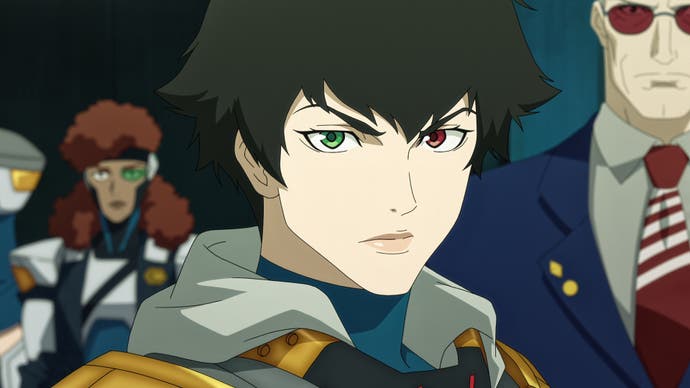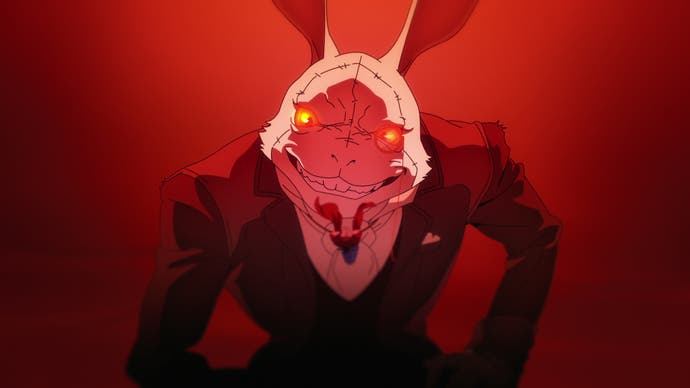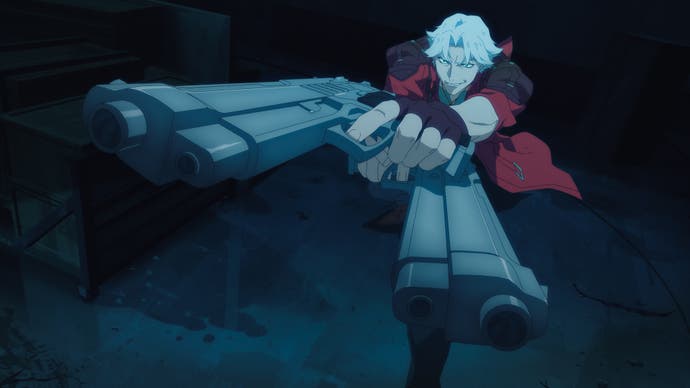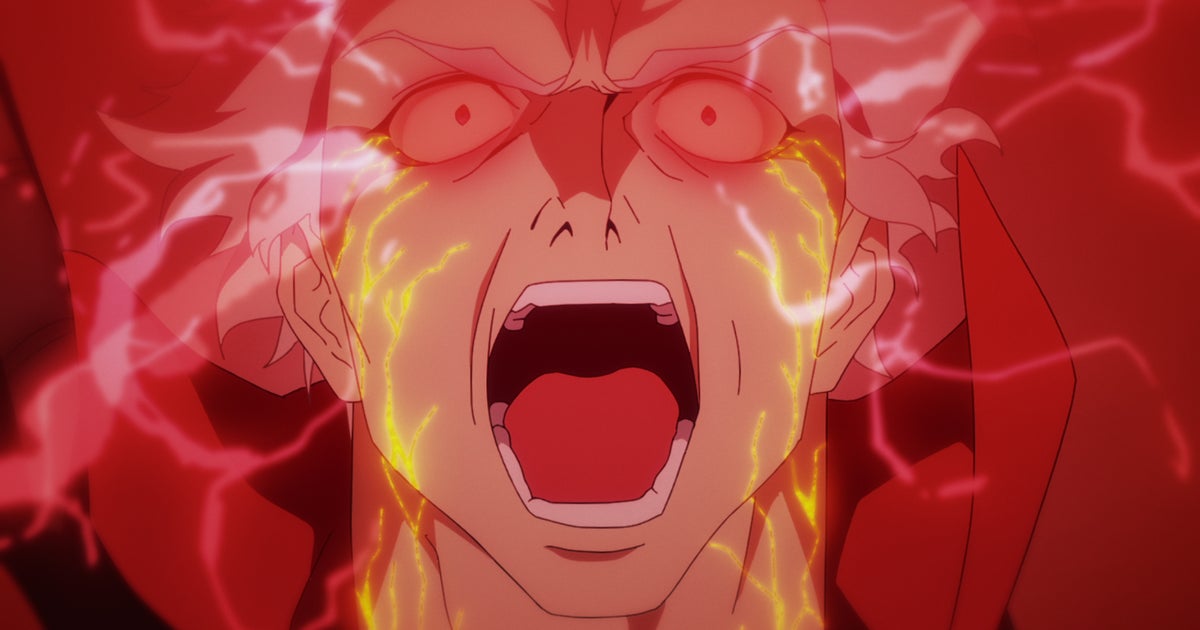Next year Devil May Cry will catch up with its lead character’s hair by celebrating its silver anniversary. The hellacious Capcom action series launched in 2001 and has nimbly zigged, zagged and pirouetted over the course of six core installments. Viewed as a gunslinging, sword-swinging continuum, the through line of the franchise seems to be this: if a demon is worth slaying, it’s worth doing it with needlessly flashy style.
That signature spirit of cocksure ultraviolence to goose a score-chasing Style Gauge is preserved in Netflix’s fizzy new series, which arrives this week after first being announced back in 2018. It has been overseen by Adi Shankar, a specialist in the streamer’s games-to-animation pipeline having worked on the admired Castlevania and daft Far Cry 3 sci-fi spin-off Captain Laserhawk: A Blood Dragon Remix.
With Limp Bizkit’s meathead anthem Rollin’ soundtracking the credits sequence and knowing needle drops from the likes of Linkin Park, Rage Against the Machine and Crazy Town, the personality of this adaptation – set in a modern-ish NYC where the world is being sporadically invaded by diabolical hellspawn – is very turn-of-the-millennium nu-metal. But thankfully it is not one of those protracted origin stories where the super-powered protagonist only pulls on their iconic costume in the final scenes.
At first glance, this incarnation of swaggering demon hunter Dante (voiced with impish glee by Johnny Yong Bosch) seems fully formed: the dual handguns, longsword, K-pop idol haircut and swirling red leather trenchcoat from the franchise’s imperial phase are all present and correct. Perhaps surprisingly, there is also a whiff of Ninja Theory’s 2013 reboot DmC: Devil May Cry in Dante’s callow slacker-dom and apparent allergy to introspection.
As a child he may have witnessed his mother and twin brother get horrifically murdered by demons but Dante wears his angst pretty lightly. He also takes his enhanced fighting skills and uncanny abilities – notably Wolverine-style accelerated healing – in his sashaying stride.
As he quips, twirls and sick burns his way through supernatural skirmishes, you get the sense that he has been dispatching minor minions for so long he just started adding in all the combat curlicues to keep himself amused. (“Dammit, he’s cool,” admits a hulking elemental golem as the effortlessly acrobatic Dante prepares to smash their face in with a motorcycle.)


Dante’s life of carefree demon-busting is upended by the machinations of theatrical baddie White Rabbit (Hoon Lee), a monocle-sporting, monologue-spouting mastermind who has made it their floppy-eared mission to destroy the mystical barrier separating Earth and a sulphuric realm we think of as Hell. For that, he needs one of Dante’s heirlooms.
With rising public panic over incursions by “terrorist demons”, the US government – steered by a highly suspect vice-president (voiced by the late Kevin Conroy) – mobilises DARKCOM, a semi-privatised anti-demon army. The tip of the DARKCOM spear tasked with neutralising Dante is a characterful squad of elite operators led by Mary (Scout Taylor-Compton), a driven tactician with distinctive green and red irises and a pair of nifty rocket boots.
There is a sparky push-and-pull between Mary and Dante, her rigid by-the-book chalk contrasted with her target’s one-liner cheesiness. She assumes his matador moves and emotional shallowness must be a himbo facade to hide his true soulful self. In one of the show’s best jokes, she’s dead wrong (at least at first; Dante, Mary and White Rabbit all get some unexpected dimensionality as the tale unfolds).

Over the course of its eight episodes Devil May Cry constantly channels the sort of OTT action movies you suspect Dante watches in his messy crash pad between freelance gigs: a highway chase with demons stomping on traffic feels very Matrix Reloaded, while Mary gets a side mission in a run-down apartment block that echoes The Raid or Dredd. Heads are brutally lopped, guts are generously spilled and despite the freewheeling vibe the collateral damage slowly but surely rises.
The animation by Korean veterans Studio Mir (who had a hand in the recent X-Men ’97 cartoon) has a pleasingly elastic snap and constantly ground-shattering heft. They have also mastered the art of foreshortened perspective so various characters can strike a badass pose while the barrel of their chosen weapon looms intimidatingly large in the frame. If there was an on-screen Style Gauge, the artists would be racking up the points.
So far, so moreish action-fest. But just when you’ve synchronised with its headlong pace and constant moshpit swirl of action, Devil May Cry abruptly demonstrates it has another gear: a poised, essentially dialogue-free flashback episode that gives Studio Mir space to flex in completely different artistic directions. That impressive detour en route to an energised but fairly boilerplate apocalyptic finale is what suggests there could be more mileage in this spirited take on the mythos.

